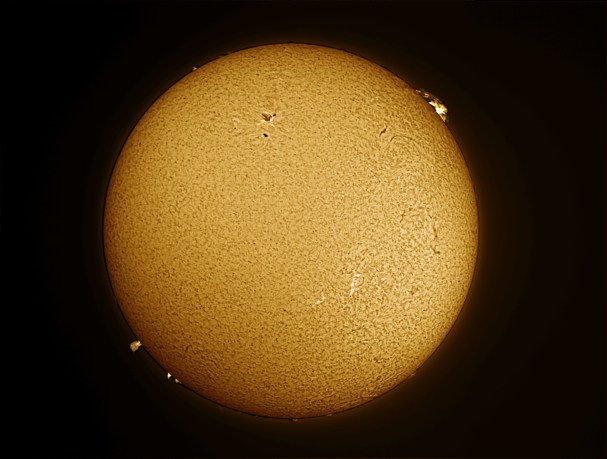Across morning the sun blazes its glory.
Despite the tired old blue metaphors and euphemisms
embraced since childhood, it is of its own accord whatever we believe.
Soaking up all our referents.
The truth of light and warmth.
The truth of day.
The truth of light against the universe of night and dark.
What drives the weather, the world we know, life as we know it.
A beacon sourcing the wind that fills my sails.
How do you account for a phenomena that seems
to not know its perfection, the enormity of it?
Who like me wants to be a proper point of light for eternity,
what I will never be.
Of course I note the silence of the stars.
But I, by definition, am given the ample chance to dream
and cry out in the night that my life be fruitful, too.
Since youth I have cried out in the night, as my mother
will attest having heard what grace bestowed.
By that physics. Nothing abstract.
Once again, my friend kindly shares another amazing photograph, and notes that it was taken recently when the Earth reached aphelion, or the farthest point in its orbit around the Sun.
The telescope used has a special “hydrogen alpha”, or “H-alpha” filter. According to Sky and Telescope magazine: “H-alpha light is emitted by hydrogen atoms, by far the most common element in the Sun, when electrons within those atoms absorb energy and rise to a higher energy level or orbit. When they cascade back to their original orbits, they release that energy as crimson light with a wavelength of 6562.8Å (656 nm).
The process occurs with great efficiency in the 1,250-mile-thick layer of solar atmosphere located just above the photosphere called the chromosphere. Here, the temperature rises from about 11,000°F to 36,000°F, hot enough to excite hydrogen to emit its singular red light.”
You can see a couple of nice solar prominences at the edge of the Sun, each of which are larger than the Earth. The image was captured with a monochrome sensor, which gives better resolution than a color sensor.
Stephen Cipot
Garden City Park

